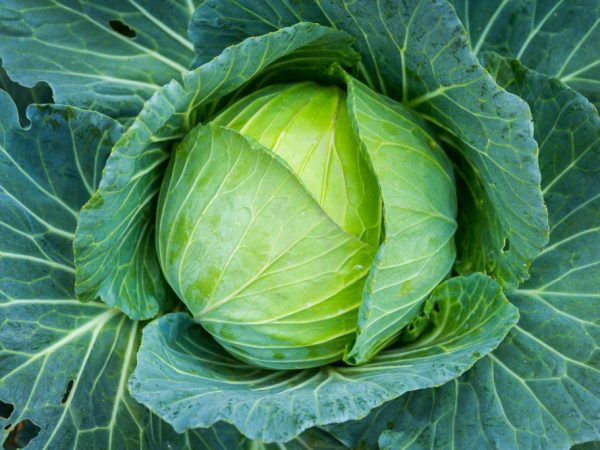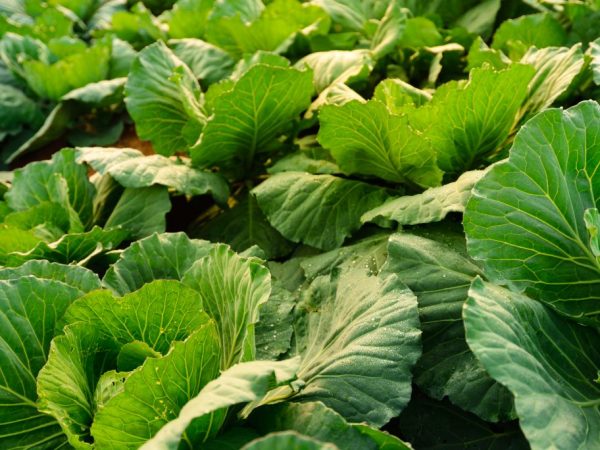Characteristics of krautman cabbage
The Krautman cabbage variety is loved by gardeners due to its many advantages. The culture is characterized by high yield, excellent taste and presentable appearance.

Characteristics of krautman cabbage
Variety characteristic
Krautman is a hybrid of white cabbage. A relatively new species. The originator is Bejo Zaden (Holland). Included in the State Register in 1993. Grown almost all over Russia, as well as in Ukraine and Moldova.
Refers to mid-season varieties: from the appearance of full shoots to the first harvest, it takes from 120 to 140 days. Culture has several benefits:
- excellent yield indicators - up to 9 kg of vegetables per 1 sq. m .;
- long-term storage in the bud without losing its qualities;
- resistance to decay and cracking;
- good transportability;
- marketable condition;
- amicable ripening of heads of cabbage;
- has immunity to diseases caused by fungi;
- adapts to the weather conditions of different regions.
Withstands thickened plantings. The disadvantage of the plant is a weak root system. For this reason, after ripening, the heads fall to one side.
Description of the head of cabbage
The leaf rosette is compact, slightly raised. Leaves are small, slightly wrinkled. The color is deep green, has a waxy coating of medium to strong intensity. The edge is smooth, even.
The head of cabbage is round, half-covered, dense. The size is above average. The leaves are thin inside. Weight ranges from 1.5 to 4 kg, some specimens reach 7 kg. the color on the cut is snow-white. The inner and outer stumps are the same, their length is average. The forks differ in alignment. The taste is excellent: Krautman F1 cabbage is sweet and juicy, the leaves are crispy. Contains a large amount of vitamins A and C, as well as other useful elements. It surpasses even cauliflower in these qualities. It has the following chemical composition:
- 4.1% total sugar;
- 7.4% dry matter;
- 46.2 mg of ascorbic acid per 100 g of fresh product.
The preservation of the fruits is about 4 months. During this period, they do not lose their taste and presentable appearance.
Application of the vegetable
Krautman F1 is consumed fresh in salads. Suitable for pickling and pickling. Vegetables are sold on the market as they are in great demand among consumers.
Care
Growing conditions

Cabbage needs sunlight
Plants prefer a bright spot. Optimal air temperature is not lower than 17˚С, soil - not less than 14˚С. When cultivating in film shelters, they must be regularly ventilated.
Watering
Since cabbage is a moisture-loving culture, it is necessary to provide it with timely moisture. For this purpose, a slightly pink solution of potassium permanganate is introduced for the first time. The next watering is carried out every 2-3 days with warm, settled water. It is better to moisturize the soil in the morning or evening, when evaporation is low. For 1 sq. m. requires 12 liters of liquid.
Plants especially need an abundant amount of water in the first days after planting, as well as during the period of setting heads.A month before the fruits ripen, watering is reduced.
Loosening and hilling
In order to form a powerful root system, the soil under the plants is loosened. This will provide her with access to oxygen and moisture. The ground is covered with a hoe to a depth of 4-5 cm. When performing manipulations, weeds are removed. Some gardeners add a layer of mulch. For this, peat is used. It will allow moisture to remain in the soil, and will not give the weed grass an opportunity to develop.
Hilling is done 2 times per season. Thanks to the earthen snowdrift, the plants form additional roots. They will provide good nutrition to the cabbage.
Top dressing
In order to increase yields, fertilizers are applied. Krautman F1 needs at least 2 feedings:
- 2-3 weeks after planting the plants to a permanent place;
- 20 days after the previous one.
For the first time, mullein infusion is used as a fertilizing agent, which is prepared in a ratio of 1: 8. An infusion of bird droppings is also used, the ratio for it is 1:12. Consumption - 0.5 l of liquid per plant. They are brought in at the root.
For the second feeding, use the same means, but increase the consumption - 1 liter of infusion per head of cabbage. Such fertilizers contribute to the rapid growth of vegetative mass.
Foliar dressing is also produced. For spraying the leaves, prepare the following solution:
- 1 g of ascorbic acid;
- 60 g of urea;
- 4 g superphosphate;
- 10 liters of water.
The product can be used every 20 days. But with subsequent treatments, the amount of urea is reduced.
Diseases and pests
Krautman white cabbage is susceptible to diseases such as black leg and keela. In the first case, the lesions are determined by the black color of the areas on the culture. Over time, this leads to rotting. The plant is easily pulled out of the ground. To prevent the black leg from multiplying, diseased heads of cabbage are removed. The soil is treated with a 1% solution of Bordeaux mixture or a solution of copper sulfate (5 g per 1 bucket of water).
With a disease such as the keel, the plants turn yellow and wither. For its prevention, dusting with wood ash is done. If the keel is damaged, the damaged leaves are removed, the soil is sprinkled with lime.
Plants are also exposed to the invasion of such pests:
- Cruciferous flea - forms holes in the leaves, the culture may die. An infusion of garlic, tobacco or chamomile is used against insects.
- Cabbage fly - the leaves become lilac in color, the plants stop growing, and then wither. You can fight the pest with the help of burdock infusion. The larvae are harvested by hand.
- Cabbage white - nibbles leaves, even penetrates into the head. To prevent damage by these insects, dill, garlic, and tomatoes are planted nearby.
Conclusion
In the description of Krautman cabbage, the variety is characterized on the positive side. He is one of the best in various indicators in the group of mid-season species of Dutch selection.
When growing a crop, you can always count on good productivity. To increase it, it is necessary to provide the plants with optimal conditions and high-quality care.


